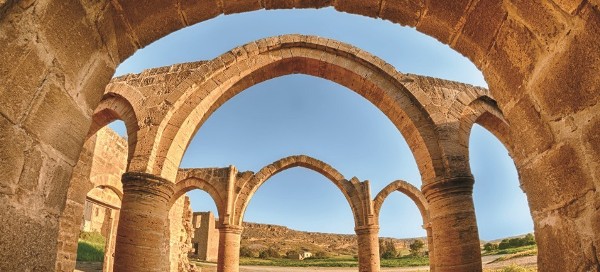It may not be the first choice as base for a Cyprus holiday, but Nicosia is certainly packed with historical and cultural attractions, and makes an excellent day out (or more) from the island’s popular beach resorts. Larnaca is only 40 minutes away and it’s under an hour’s drive from the remote beauty of the Troodos Mountains. Nicosia remains a divided city, with the border between Greek and Turkish-controlled regions of the country running through the heart of the walled city. This ‘Green Line’ ensures that modern history is inescapable for visitors; but Nicosia’s roots run deep and far, and even a brief exploration will reveal a colourful legacy left by a succession of occupiers.
Walled City
Most of the city’s historical attractions fall within a fortified wall, unique in its perfect circular form. Built by the Venetians in the 16th century to withstand the Ottoman forces (they conquered the city in any case), the walls have been remarkably well preserved throughout the city’s turbulent history. While some of the wall’s northern parts are out of bounds (they are part of a Turkish military base), the bulk of the wall is open for visitors to explore, and the surrounding moat plays host to gardens, exhibitions and other events.
Ledra Street
This famous street runs through the heart of the old city, and is split by the Green Line. It’s lined with boutiques, bars and the typical mix of businesses catering to shoppers and tourists. Ledra Street is also one of the most popular crossing points into the city’s Turkish-controlled side. Crossing the Green Line was once very difficult, but for EU passport holders it’s now a simple case of showing your passport at the gate.
Byzantine Museum
This museum houses what is considered to be one of the finest collections of Byzantine art in the Mediterranean. There are over 200 icons, spanning a period of over 1000 years. The heyday of iconography was in the 12th century, and this period is particularly well represented.
St John’s Cathedral and Archbishop’s Palace
Built in around 1662, this cathedral is the headquarters of the Greek Orthodox Archbishop of Cyprus, and is considered one of the most holy places of worship in the country. It is built on the site of a former Benedictine monastery, and houses an impressive collection of Renaissance-style frescoes. Nearby is the Archbishop’s Palace, built in the mid-20th century in neo-Byzantine style. It is home to the current Archbishop, and also houses the National Struggle Museum and the Folk Art Museum.
The House of Hadjigeorgakis Kornesios
This is the well-preserved home of an 18th-century dragoman (an intrepeter between the Ottoman rulers and the local Christian population). The house is open to visitors and gives an insight into the living conditions and furniture of a typical (upmarket) townhouse from that period. It features intricate carvings and painted decorations.
Freedom Square
An attraction perhaps more for what it was and what it will be, rather than for its current state as an unsightly building site. Freedom Square (Eleftheria Square) lies just to the south of the walled city, and during British times was the top of a bridge above the moat. It is the site of national celebrations and rallies, and recently the British architect Zaha Hadid was commissioned to redesign the style. As with all of her work, her plans have attracted both acclaim and protest, and as a result the work is moving very slowly.





